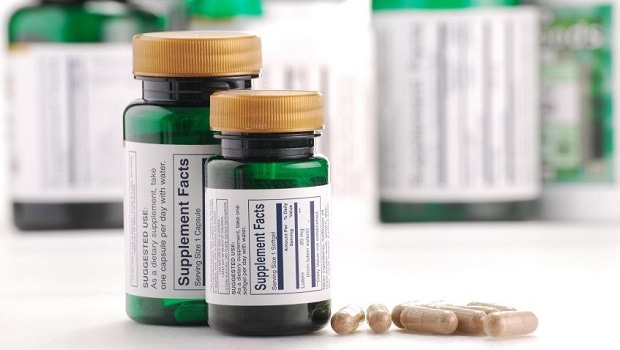It all starts with a name and knowing what is being placed into the many bottles that constitute the world of dietary supplements, especially botanical dietary supplements.

In recent months, the entire herbal dietary supplement industry has been turned on its head by the New York Attorney General (AG), Eric Schneiderman. Based on DNA testing, AG Schneiderman reported a number of herbal products contained no herbal material, contained unlawful ingredients, and were contaminated. Rightfully, it was brought to the AG’s attention that the analytical technique (DNA barcoding) used in the analysis of the products was misapplied, as it is unable to detect DNA in extracts. More importantly, the technology cannot discern between the presence of the species being tested and the presence of a grain of pollen or blade of grass, which also contains DNA, or DNA-containing excipients (e.g., rice), which are typically used as flow agents or carriers in finished herbal products.
The AG upped his game by taking a stab at devil’s claw, claiming the combining of two species of devil’s claw (Harpagophytum procumbens and Harpagophytum zeyheri) constituted an adulteration and illegal dietary ingredient, all because of a name—an action that holds continued threats for all aspects of the herbal products community, manufacturers, marketers, retailers and health practitioners. It all starts with a name and knowing what is being placed into the many bottles that constitute the world of dietary supplements, especially botanical dietary supplements.
Herbal Nomenclature—A Rose by Any Other Name
There are four primary ways that herbs are named. First is the common name by which a plant is most widely known: tomato, apple, hawthorn or bilberry. Botanically, Latin names consisting of a genus and species name are used to define the same plants and, when used, are italicized. Examples include Solanum lycopersicum (tomato), Malus pumila (apple), Crataegus monogyna (hawthorn) and Vaccinium myrtillus (bilberry); the first name represents the genus, the second the species. In some cases, the Latin name becomes so familiar that it may also be used as the common name (e.g., echinacea, astragalus). Some names are made up by marketing departments and become socially accepted, such as goji berry (Lycium barbarum), suma (Pfaffia paniculata) and fo-ti (Polygonum multiflorum). Also used are pharmaceutical names, a naming system uniquely designed to represent the parts of plants used in medicine. In this nomenclature system, the part of the plant is used to define what single or multiple species of plant is used medicinally. For example, the bark (Cortex) of multiple species of willow (Salix) has been historically used and is accepted, through either historical use or chemical investigation, as similar enough to be used interchangeably. This is where AG Schneiderman, presumably with good intention, got it very wrong to the detriment of all aspects of the dietary supplement community.
Schneiderman and Devil’s Claw
After first misapplying the wrong test (DNA barcoding) to come up with an inaccurate answer (adulteration and contamination) in numerous herbal products tested in his initial investigation, Schneiderman used the same DNA barcoding to find that two species of devil’s claw (Harpagophytum procumbens and Harpagophytum zeyheri) were present in products. He also used a 20-year-old reference, Herbs of Commerce, a no longer authoritative but still officially accepted text, codifying common and botanical names, as his primary source. Despite the fact that both species of Harpagophytum have historically been used interchangeably and called “devil’s claw," are chemically and pharmacologically similar, and are accepted as interchangeable by virtually all national and international authorities, Harpagophytum zeyheri was not included in Herbs of Commerce. This, according to Schneiderman, constituted a violation of dietary supplement GMPs (good manufacturing practices), and he alleged marketers were defrauding their customers by selling an inferior, cheaper ingredient. The AG has cast a net over the industry that has ensnared mega-retailers like Target, Walmart, GNC and Walgreens and staple herbal companies. Certain enforcement actions in this industry are justified (illegal drug products masquerading as supplements), and some, like the case of devil’s claw, go beyond ridiculousness.
Coordinated Attacks Against Supplements
Schneiderman’s actions have heralded a new round of sophisticated, coordinated attacks against supplements by FDA, FTC, attorneys general, the U.S. Postal Inspection Service, and the U.S. Department of Justice. While these enforcement actions are being directed under the cloak of consumer protection, with rare exception, they have not been the result of consumer complaints. Rather, the actions appear to be generated due to a philosophical belief that dietary supplements do not play a valuable role in human health, and the Dietary Supplement Health and Education Act (DSHEA) must be overhauled or overturned. In this regard, these actions are reminiscent of the battles that led to the need for passage of DSHEA, attacks guided without any recognition of the potential benefits that supplements hold as an integral and valuable part of American health care.
Industry Self Responsibility
While these recent actions have mostly been misdirected, they have revealed underlying deficiencies in the foundation of the dietary supplement industry that should not exist. In the botanical realm, manufacturers have little excuse for not ensuring they are using the correct species, can defend the use of that species, and be sure that ingredients meet all the quality control requirements mandated by already existing GMPs. The laws and regulations currently in place are more than sufficient to ensure the identity and quality of supplement products if manufacturers apply them. Similarly, appropriate testing methodologies and standards for the overwhelming majority of botanical ingredients exist within national and international pharmacopoeias and other authoritative works. No one is served by employing invalid and inappropriate analytical techniques, such as DNA barcoding, as a basis for regulatory actions. Doing so only serves to misinform. Unfortunately, intentional and unintentional adulterations continue to occur and too many manufacturers make ingredient buying decisions based on price rather than quality. More of the industry needs to step up to the plate, keep its own references (e.g., Herbs of Commerce) updated, appropriate and applicable, take advantage of already existing third-party standards that exist in national and international pharmacopoeias, and factor quality into their business practices.
Though Schneiderman’s actions are misguided, the industry bears a great part of the responsibility for not having its own house in order, to the detriment of the industry itself, the American public, and the lost potential health benefits that occur when quality is not factored in as an integral part of the category. It all begins with a name—what is in the product?—and industry self-responsibility.

Trained in Western, Chinese, and Ayurvedic herbal medicine, Roy Upton has been working as an herbalist for more than 30 years and is the executive director of the American Herbal Pharmacopoeia. For more information, email [email protected]
About the Author(s)
You May Also Like






.png?width=800&auto=webp&quality=80&disable=upscale)